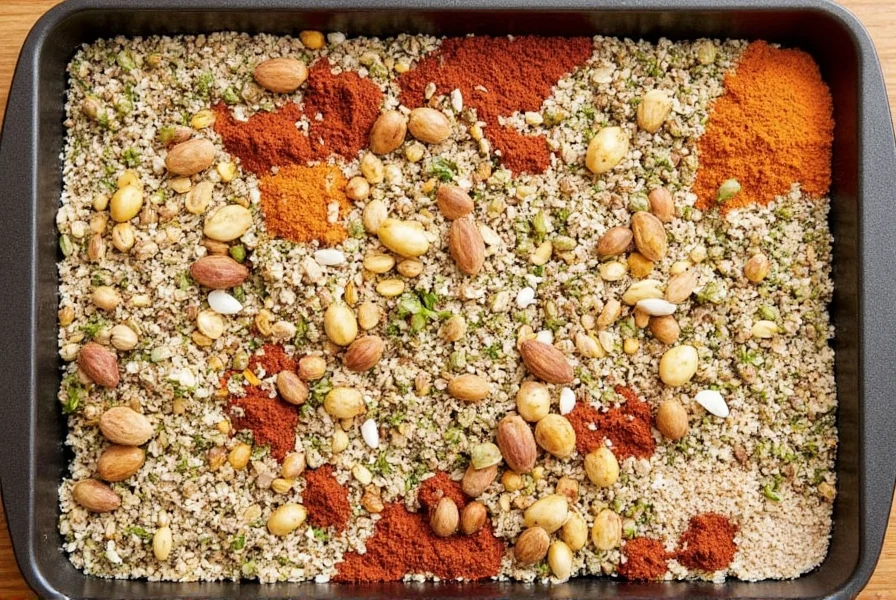| Name | Main Ingredients | Flavor Profile | Best For |
|---|---|---|---|
| Za'atar | Oregano, sumac, sesame seeds, thyme, salt | Tangy, earthy, with a hint of nuttiness | Rubbing on flatbreads, mixing into dips, sprinkling over roasted veggies |
| Advieh | Rose petals, cardamom, cinnamon, nutmeg, clove | Floral, sweet-spicy | Simmering stews, rice dishes, dessert baking |
| Baharat | Black pepper, cumin, coriander, paprika, cinnamon, cloves | Earthy, complex, slightly sweet | Meat marinades, lentil soups, braised dishes |
| Dukkah | Nuts (hazelnuts, pistachios), sesame seeds, coriander, cumin, salt | Nutty, aromatic, textured | Dipping olive oil-soaked bread, coating fish or chicken |
| Harissa | Smoked chili peppers, garlic, caraway, coriander, olive oil |
| Spice Mix | Best Pairings | Ideal Occasions |
|---|---|---|
| Za'atar | Hummus, labneh, falafel, avocado toast, grilled zucchini | Weekend brunch, healthy snacks, mezze platters |
| Advieh | Rice pilafs, slow-cooked lamb, fruit compotes, baked apples | Dinner parties, cozy nights, festive meals |
| Baharat | Chicken kebabs, lentil soup, spiced quinoa bowls | Family dinners, meal prep, hearty lunches |
| Dukkah | EVOO-dipped bread, salmon crusted with dukkah, avocado slices | Appetizers, breakfast boards, luxury bites |
| Harissa | Grilled eggplant, couscous, tomato-based stews, spicy mayo | Summer BBQs, fusion recipes, late-night cravings |
| Brand | Mix Type | Features | Who It's For | Price Range |
|---|---|---|---|---|
| Zayna Spices | Za'atar | Lebanese-style blend with high-quality oregano and sumac | Home cooks looking for authenticity | $9–$12/jar |
| Kalustyan's | Advieh | Hand-blended with real rose petals and organic spices | Chefs seeking premium quality | $14–$18/jar |
| The Spice Garden | Baharat | Versatile blend with balanced warming spices | Beginners and daily home users | $7–$10/jar |
| Moroccan Gold | Dukkah | Contains pistachio and hazelnut for rich flavor | Fans of gourmet snacking and dipping | $11–$15/jar |
| Lou Ana | Harissa | Available in paste and powder form; smoky, fiery punch | Heat lovers and North African cuisine fans | $6–$10/tube |











 浙公网安备
33010002000092号
浙公网安备
33010002000092号 浙B2-20120091-4
浙B2-20120091-4